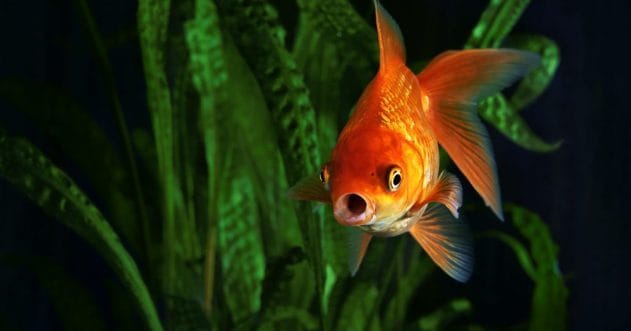Science isn’t always about serious labs and complex formulas. Sometimes, researchers dive into questions that make you scratch your head and chuckle! These brilliant minds get creative, often in wonderfully weird ways, to uncover surprising truths about our world. Get ready to explore some of the most unusual and fascinating quests scientists have embarked upon, answering questions you probably never thought to ask!
10. What Makes Someone Seem Creepy?
Have you ever met someone and just felt… uneasy? In 2016, a group of psychologists decided to investigate what exactly triggers that “creepy” feeling. They interviewed over 1,300 people to pinpoint traits that give us the chills. Of course, things like appearing unkempt or working as a clown made the list. However, some answers were quite unexpected! Apparently, collecting dolls, insects, or even watching birds can come across as unsettling to some. Other behaviors like laughing at odd times, a strange smile, or frequently licking lips also made people want to keep their distance. It’s a curious look into human perception!
9. The Great Brazil Nut Puzzle Solved!
Next time you open a bag of mixed nuts, notice how the big Brazil nuts are always at the top. Puzzling, right? Shouldn’t the heavier nuts sink? Physicists were stumped by this for a while. In 2021, scientists finally cracked the case. They shook a bag of nuts repeatedly and scanned it in 3D after each shake. Surprisingly, it’s not about weight or size. It’s all about how the Brazil nuts are oriented! As the packet moves, these larger nuts tend to turn so they point upwards. This creates space underneath, allowing smaller nuts to trickle down and push the Brazil nuts to the top. Mystery solved after just 50 shakes!
8. Learning to ‘See’ with Sound: Human Echolocation
You’ve heard of bats and dolphins using echolocation, but did you know some humans can do it too? They use clicks or snaps to navigate without sight. A 2021 study wondered if this amazing skill could be taught. The results were astonishing! Researchers found that both legally blind and sighted individuals could learn to echolocate within just 10 weeks. Participants weren’t just navigating mazes; they could also identify the size and orientation of objects by listening to the echoes from their clicks. It shows how adaptable our senses can be!
7. The Lost Letter Experiment: A Test of Kindness

How helpful are strangers? In 2012, anthropologists in London tried to find out with a clever experiment. They scattered 300 letters on the pavements of 20 different neighborhoods. The addresses on these “lost” letters were actually the researchers’ homes. They then waited to see how many would be returned. The findings were quite interesting: about 87% of letters dropped in wealthier areas made their way back, compared to only 37% from poorer neighborhoods. The study suggested this wasn’t because people in disadvantaged areas cared less. Instead, the daily hardships might make them more cautious and less likely to pick up random items off the street.
6. Pigs in Suitcases: A Grim Forensic Study

This one is a bit grim but incredibly important for solving crimes. Sadly, criminals sometimes dispose of bodies in suitcases. This makes it hard for police to determine the time of death. To learn more, researchers conducted a large experiment focusing on carrion insects—bugs like flies and beetles that colonize a body. When a body is left in the open, these insects provide vital clues. A suitcase changes things. In a 2022 study, scientists placed stillborn piglets in almost 70 bins and suitcases outdoors. They found that even with the container, insects still offered crucial information. By studying how bugs clustered outside, which larvae got inside, and the dead insects within, forensics could learn about toxicology, relocation of the body, and time of death, even considering weather effects.
5. Pee Power: Fertilizing Crops the Old-Fashioned Way
Would you eat bread made from wheat fertilized with human urine? It might sound strange now, but for thousands of years, pee was a common and effective fertilizer! It’s packed with nutrients like phosphorus, potassium, and nitrogen that plants love. Scientists recently wondered if this ancient practice could help modern farmers, especially in areas with poor soil and limited access to commercial fertilizers. They ran a large-scale experiment in Niger, teaching female farmers how to safely use sanitized urine on their crops. The results? After three years, their millet crops were 30% more plentiful! Years later, over a thousand women in Niger continue to use this free and effective method.
4. The 500-Year Experiment: Bacteria’s Ultimate Survival Test
How long can bacteria survive? This question sparked an incredibly ambitious study that began in 2014. It all started when a researcher rediscovered a forgotten petri dish after 10 years and found the dried bacteria could be revived! This led to the 500-year experiment. Scientists sealed two types of bacteria in 800 glass vials. Some are shielded by lead to protect against radiation. For the first 24 years, vials are opened every two years to check the bacteria’s DNA and viability. After that, they’ll be checked every 25 years for the remaining 475 years! While the bacteria might make it, the experiment itself faces challenges like long-term collaboration and simply not losing the box of vials.
3. Lab-Grown Mini-Brains with ‘Eyes’
Scientists can use stem cells to grow tiny versions of human organs, called organoids, to study diseases. In 2021, researchers aiming to understand early retinal disorders took this a step further. They managed to grow mini-brains that developed their own eye-like structures! These organoids looked like yellowish blobs with two dark dots – these were optic cups, an early stage of eye development. Amazingly, these tiny “eyes” were sensitive to light and developed much like eyes in a human embryo, even forming corneal tissue and lenses. These slightly eerie but incredible creations could help study eye diseases and how eyes and brains interact during development.
2. Splash! Turning Water into Metal
Could you turn ordinary water into metal? In theory, if you squeeze almost any material hard enough, its atoms crush together and share electrons, giving it metallic properties like conducting electricity. For water, this would require immense pressure – about 15 million times normal air pressure! Plus, the experiment needs alkali metals like sodium and potassium, which usually explode on contact with water. In 2021, scientists achieved the seemingly impossible. By working in a vacuum and using water vapor, they slowed down the explosive reaction enough for the alkali metals to share electrons with the water. The result? A droplet of water that looked golden and conducted electricity for a few seconds. Pure science magic!
1. Goldfish Behind the Wheel: The Fishmobile
Can a fish drive a car on land? It sounds like a joke, but researchers in Israel actually built a “fish-operated vehicle” (FOV) – basically an aquarium on wheels – to find out! Their goal was to see how fish navigate and if their brains could adapt to a completely alien environment. Six goldfish were trained to pilot the FOV. At first, they swam around randomly, but soon they seemed to understand the controls. With some training and yummy treats as rewards, the goldfish learned to drive the FOV towards targets. When obstacles were placed in their path, they even figured out how to steer around them! This quirky study showed just how resourceful fish can be when motivated by food, even in the strangest situations.
These studies show that science can be full of surprises, tackling questions both profound and peculiar. It’s this curiosity that drives discovery and helps us understand the wonderfully weird world around us.
What’s the quirkiest science study you’ve ever heard of? Share your thoughts in the comments below!










